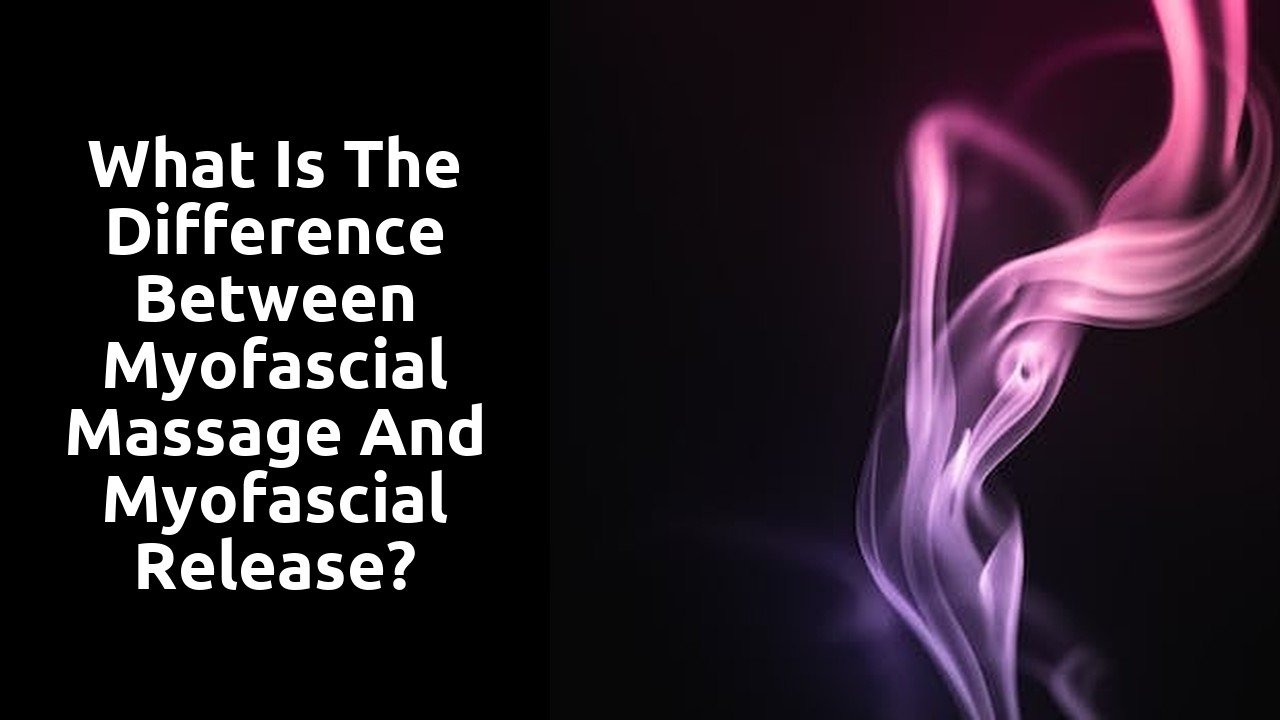Table Of Contents
Conditions Treated by Each Technique
Myofascial massage and myofascial release are two distinct techniques that focus on treating different conditions related to the myofascial system. Myofascial massage primarily targets muscle tension, knots, and restrictions in the fascia to improve circulation, flexibility, and overall mobility. It is commonly used to alleviate general muscle tightness and soreness, as well as to enhance relaxation and stress relief. On the other hand, myofascial release is a therapeutic approach that aims to release adhesions, scar tissue, and restrictions within the fascia that may be causing pain, limited range of motion, or dysfunctional movement patterns. Unlike myofascial massage, myofascial release techniques typically involve sustained pressure, stretching, and specific manual manipulation to address deeper layers of tissue and fascial adhesions.
Qualifications of Practitioners
Practitioners offering Myofascial Release should ideally have comprehensive training in this specific technique to ensure its proper execution. This specialized training equips therapists with a deep understanding of the fascia and how to effectively address myofascial restrictions in the body. Additionally, practitioners should have a solid grasp of anatomy and physiology to accurately target areas of tension and promote healing through Myofascial Release. A combination of practical experience and theoretical knowledge is essential for practitioners to deliver optimal treatment outcomes.
Education and Training for Myofascial Massage Therapists
To become a certified myofascial massage therapist, individuals typically need to complete a comprehensive training program that focuses on the principles and techniques of myofascial release. These programs cover topics such as anatomy, physiology, pathology, and the specific skills required to perform myofascial massage effectively. Students also learn about the role of connective tissue in the body and how myofascial release can help alleviate pain and improve mobility for clients. Additionally, hands-on practice is a crucial part of the training, allowing students to develop their palpation skills and learn how to apply varying pressures to release tension in the fascia.
Moreover, continuing education is often recommended for myofascial massage therapists to stay current with the latest research and techniques in the field. Advanced courses may delve deeper into specific conditions that can benefit from myofascial release, as well as how to tailor treatments to meet the individual needs of clients. By pursuing ongoing education and training opportunities, myofascial massage therapists can enhance their expertise and provide more effective care for those seeking relief from musculoskeletal issues.
Research and Evidence Supporting Efficacy
Research and evidence supporting the efficacy of myofascial release techniques have been steadily growing in recent years. Numerous scientific studies have highlighted the benefits of myofascial release in improving flexibility, reducing pain, and enhancing overall well-being. These studies often involve participants with various musculoskeletal conditions, demonstrating the effectiveness of myofascial release in promoting tissue healing and relaxation.
Moreover, research on the physiological mechanisms behind myofascial release has shed light on how this technique can address muscle imbalances, decrease trigger points, and release tension within the fascia. The findings suggest that myofascial release can enhance circulation, improve range of motion, and positively impact the nervous system. By targeting the fascia, myofascial release helps restore tissue integrity and support optimal functioning of the musculoskeletal system.
Scientific Studies on Myofascial Release
Scientific studies have provided insightful data on the effectiveness of Myofascial Release in managing various musculoskeletal conditions. Research has indicated that Myofascial Release can help alleviate pain and increase range of motion in individuals suffering from chronic conditions such as fibromyalgia and lower back pain. Studies have shown promising results in reducing muscle tension and improving overall functional mobility through targeted Myofascial Release techniques.
Moreover, recent research has highlighted the potential benefits of Myofascial Release in enhancing athletic performance and preventing sports-related injuries. Athletes undergoing Myofascial Release therapy have reported improvements in muscle flexibility, reduced muscle soreness, and a quicker recovery time after strenuous physical activity. The evidence suggests that incorporating Myofascial Release into an athlete’s training regimen may contribute to better performance outcomes and overall musculoskeletal health.
FAQS
What is myofascial massage?
Myofascial massage is a hands-on technique that involves applying pressure to the myofascial connective tissue to release muscular tension and improve blood flow.
What is myofascial release?
Myofascial release is a form of manual therapy that focuses on stretching and elongating the fascia to relieve tightness and restrictions in the muscles.
How do myofascial massage and myofascial release differ?
The main difference between myofascial massage and myofascial release lies in their techniques. Myofascial massage involves direct pressure on the muscles, while myofascial release focuses on stretching the fascia.
Which technique is better for managing chronic pain?
Both myofascial massage and myofascial release can be effective in managing chronic pain. Myofascial release is often preferred for addressing deep-seated issues, while myofascial massage can provide more immediate relief in localized areas.
Can anyone perform myofascial massage or myofascial release?
No, both techniques require specialized training and expertise. It is essential to seek treatment from qualified practitioners who have completed proper education and training in either myofascial massage or myofascial release techniques.
Related Links
Myofascial Release
Does myofascial release really work?
What are the risks of myofascial release?
What are 3 myofascial release techniques?
How many clothes do you take off for a massage?
Is it rude not to tip a massage therapist?
How much do you tip a massage lady?
What to expect when you get a full body massage?
How much do you tip for a RMT massage?
What is the difference between an RMT and a massage therapist?
Do you take off clothes for RMT?
How do I become a registered massage therapist in Ontario?
